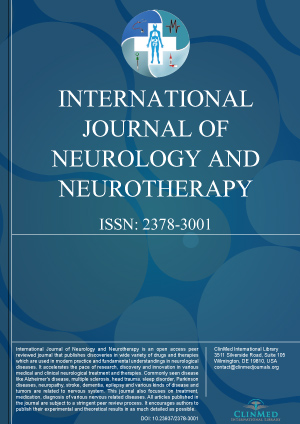Open Access DOI:10.23937/2378-3001/3/5/1058
Stroke is a Risk Factor for Fracture-A 17-Year Follow-Up Study in Men and Women
Penelope Trimpou, Anders Lindahl, Goran Olerod, Per-Olof Hansson, Anders Oden, Lars Wilhelmsen and Kerstin Landin-Wilhelmsen
Article Type: Original Article | Indexed Archive: Volume 3
A prospective study was performedof arandom population sample (n = 1616) in Gothenburg, Sweden; 746 men and 870 women, aged 25-64 years in 1995, from the WHO MONICA Project. Fractures were verified by X-ray, CVD events by medical records and lifestyle factors and medical treatment via a questionnaire. Quantitative Calcaneal Ultrasound (QUS) examinations were performed. Fasting blood samples were taken, and in fertile women also on cycle day 7-9....
Open Access DOI:10.23937/2378-3001/3/5/1057
Highlights of Kennedy's Disease
Agustina Pia Marengo, Fernando Guerrero Perez, Rocio Valera Yepes and Carles Villabona Artero
Article Type: Letter to the Editor | Indexed Archive: Volume 3
The pathogenesis of KD is the polymorphic CAG (cytosine, adenine, guanine) tandem-repeat expansion above 40 repeats in exon 1 of the androgen receptor (AR) gene on chromosome Xq11-12. In normal population the number of CAG codons usually ranges from 12 to 25, with an average size of 21-22. The polymorphism involving the CAD triplet repeat expansion of the AR gene, coding for a polyglutamine tract in the N-terminal transactivation domain of the AR protein, has been involved either in endocrine or...
Open Access DOI:10.23937/2378-3001/3/5/1056
The Prevalence of Spasticity in Veterans Living in a Long-Term Care Facility
Maxim Turchan, Taylor S Hudson, Chandler E Gill, Amanda D Currie, Anna L Molinari, Mallory L Hacker, Fenna T Phibbs, Christopher Tolleson, Sarah H Millan, Lauren E Heusinkveld, Candace J Grisham and David Charles
Article Type: Original Research | Indexed Archive: Volume 3
All facility residents and their medical decision makers (if necessary) were approached for enrollment in this study. After consent was obtained, two neurologists specializing in movement disorders independently conducted a brief physical examination to ascertain the presence or absence of spasticity. The prevalence of spasticity in veterans residing in this long-term care facility was 33% (14/43). Forty-three percent (6/14) of subjects determined to have spasticity had at least one sign of spas...

